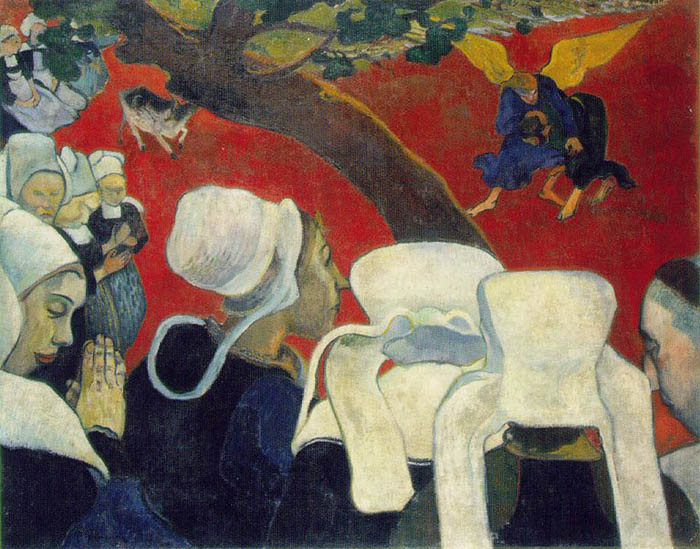Next Wednesday a new exhibition will open at the
Gauguin described the work, shortly after painting it, in a letter to his friend Vincent Van Gogh, with whom he was about to stay (an ill-starred sojourn on which I touched, coincidentally, in last week’s column): “A group of Breton women praying in costumes of very intense black. Yellowy white bonnets, very luminous. The two bonnets to the right are like monstrous helmets. An apple tree crosses the dark violet canvas and the foliage drawn in masses like clouds of emerald green shows, in its interstices, the yellowy green of sunshine. The ground is pure vermilion. Close to the church it is toned down and becomes brownish red. The angel is dressed in violent ultramarine blue and Jacob in bottle green. The wings of the angel are pure chrome yellow number 1. The hair of the angel chrome number 2 and the feet flesh orange – I believe that I have achieved, in the figures, a great rustic and superstitious simplicity – the whole thing is very severe – the cow under the tree is tiny compared to reality and is rearing up. For me, in this painting, the landscape and the combat only exist in the imagination of the people in prayer after the sermon, which is why there is a contrast between the people, who are natural, and the struggle going on in a landscape which is non-natural and out of proportion.”
Gauguin painted the picture while...


